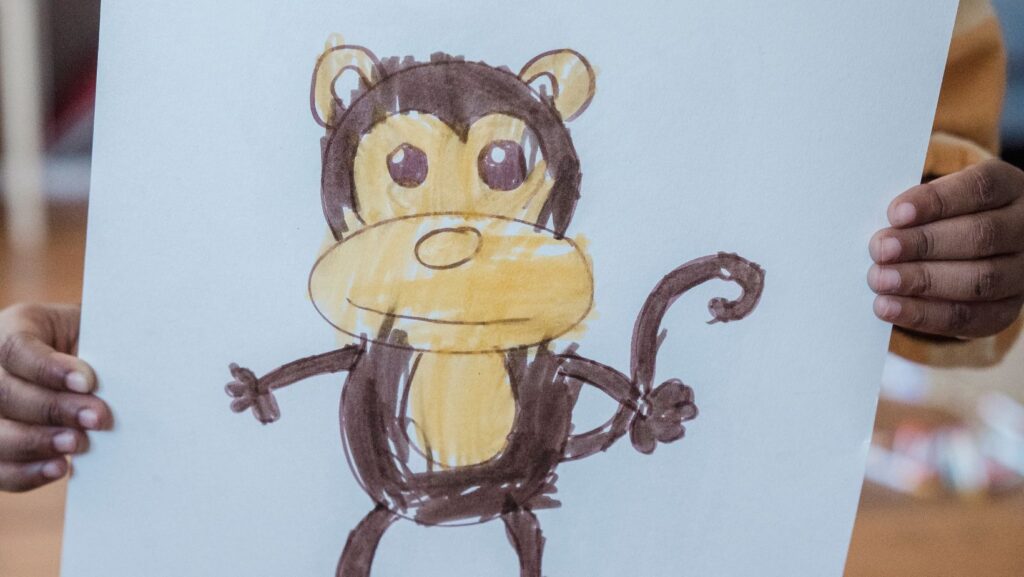Drawing, an art form as ancient as humanity itself, captures the essence of the visual world. When it comes to sketching wildlife, few subjects are as challenging and rewarding as monkeys. These lively creatures, with their expressive faces and dynamic poses, offer artists a unique opportunity to explore movement and emotion in their work.
Drawing:uqp7yroofp0= Monkey
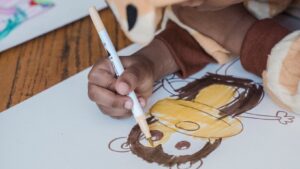 Drawing monkeys presents artists with the opportunity to capture the vivacity and emotion inherent in these lively creatures. Known for their expressive faces and dynamic body movements, monkeys serve as ideal subjects for artists aiming to depict a range of expressions and actions in their artworks.
Drawing monkeys presents artists with the opportunity to capture the vivacity and emotion inherent in these lively creatures. Known for their expressive faces and dynamic body movements, monkeys serve as ideal subjects for artists aiming to depict a range of expressions and actions in their artworks.
Monkeys are especially notable for their wide range of facial expressions and body language. Artists can enhance their drawings by focusing on the eyes and mouth, which are pivotal in conveying emotions such as curiosity, playfulness, or agitation. Observing live monkeys or using photographic references can aid artists in capturing various dynamic poses, from swinging through branches to grooming behaviors.
Utilizing the Right Art Materials
Selecting appropriate art materials enhances the outcome of monkey drawings. For detailed work, fine-point pencils or charcoal allow for precision in depicting fur texture and facial features. On the other hand, watercolors or pastels can be employed to achieve softer, more vibrant renderings suitable for capturing the natural environment and the lively essence of monkeys in action.
Essential Materials for Drawing Monkeys
Choosing the Right Paper and Pencils
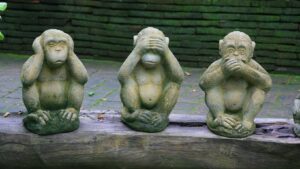 The choice of paper significantly affects the outcome of a monkey drawing. Artists prefer using smooth, heavyweight paper, which allows for detailed pencil work without causing indentations or tears. Paper with a slight texture is also beneficial, as it can hold graphite well and help in emphasizing fur textures. Sketchbooks specifically designed for pencil and charcoal offer a good balance of quality and texture for drawing wildlife.
The choice of paper significantly affects the outcome of a monkey drawing. Artists prefer using smooth, heavyweight paper, which allows for detailed pencil work without causing indentations or tears. Paper with a slight texture is also beneficial, as it can hold graphite well and help in emphasizing fur textures. Sketchbooks specifically designed for pencil and charcoal offer a good balance of quality and texture for drawing wildlife.
The Role of Color
Integrating color into monkey drawings can bring the artwork to life, highlighting the unique characteristics and natural environment of the subject. Watercolors and colored pencils are popular choices for adding a vibrant yet natural look to the drawings. Watercolors, with their ability to layer translucent washes, create a lively and fluid effect, ideal for expressing the dynamic poses and expressions of monkeys. Colored pencils, on the other hand, offer precision and control, which is crucial for adding fine details such as the gradations in fur color and the subtle hues in the eyes.
Step-by-Step Guide to Drawing a Monkey
Sketching the Basic Shape
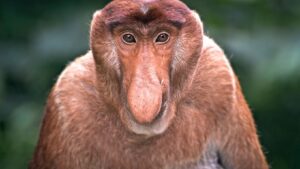 Begin by sketching the rough outline of the monkey’s body. Focus on creating a simple oval for the torso and smaller circles for the head and limbs. These serve as the foundation for the body structure, ensuring proportions remain accurate. Ensure that these forms are light, so modifications can be easily made. The initial sketch must capture the dynamic posture of the monkey, whether it’s sitting, hanging, or leaping.
Begin by sketching the rough outline of the monkey’s body. Focus on creating a simple oval for the torso and smaller circles for the head and limbs. These serve as the foundation for the body structure, ensuring proportions remain accurate. Ensure that these forms are light, so modifications can be easily made. The initial sketch must capture the dynamic posture of the monkey, whether it’s sitting, hanging, or leaping.
Adding Details and Texture
Once the basic shapes are in place, refining the sketch involves adding facial features, such as the eyes, nose, and mouth. Monkeys are particularly expressive; hence, getting the facial expressions right is crucial for conveying emotion. Pay close attention to the peculiarities of the fur’s direction and length, gradually building layers with light pencil strokes. Implement a variety of pencil grades to add depth and shadow, enhancing the monkey’s three-dimensional appearance. Specific attention to the texture of the fur with cross-hatching or stippling techniques can bring the drawing to life, mirroring the natural fur patterns observed in real monkeys.
Tips and Techniques for Realistic Drawings
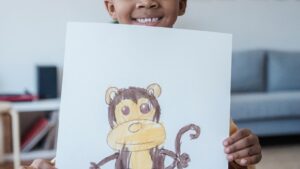 Mastering the art of drawing monkeys not only enhances an artist’s portfolio but also deepens their appreciation for wildlife. By applying the techniques outlined—such as understanding anatomy, using a variety of pencil grades, and experimenting with watercolors—artists can achieve remarkable realism and emotional depth in their work. Remember that practice is key to perfecting these skills and capturing the true essence of these dynamic creatures. Whether you’re a beginner or an experienced artist, each drawing is a step forward in your artistic journey. So grab your sketchbook and pencils and let your creativity soar with each stroke.
Mastering the art of drawing monkeys not only enhances an artist’s portfolio but also deepens their appreciation for wildlife. By applying the techniques outlined—such as understanding anatomy, using a variety of pencil grades, and experimenting with watercolors—artists can achieve remarkable realism and emotional depth in their work. Remember that practice is key to perfecting these skills and capturing the true essence of these dynamic creatures. Whether you’re a beginner or an experienced artist, each drawing is a step forward in your artistic journey. So grab your sketchbook and pencils and let your creativity soar with each stroke.
